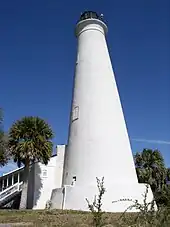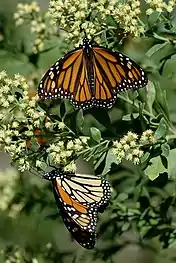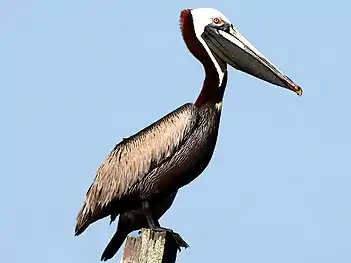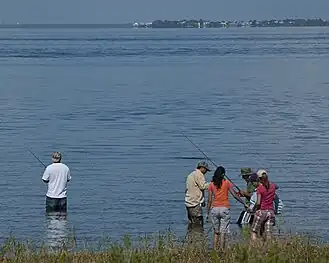| St. Marks National Wildlife Refuge | |
|---|---|
IUCN category IV (habitat/species management area) | |
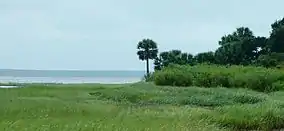 St. Marks National Wildlife Refuge shoreline near Lighthouse | |
 Map of the United States | |
| Location | Wakulla County, Jefferson County, Taylor County, Florida, United States |
| Nearest city | St. Marks, Florida |
| Coordinates | 30°09′03″N 84°08′50″W / 30.15083°N 84.14722°W |
| Area | 68,000 acres (280 km2) |
| Established | 1931 |
| Governing body | U.S. Fish and Wildlife Service |
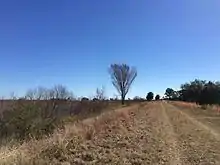
St. Marks National Wildlife Refuge, in Wakulla County, Florida, is one of the oldest wildlife refuges in the United States. Established in 1931 as a wintering ground for migratory birds, it encompasses more than 83,000 acres (336 km²) spread between Wakulla, Jefferson, and Taylor Counties in the state of Florida.[1]
The refuge includes several Gulf of Mexico coastal habitats, such as saltwater marshes, islands, tidal creeks, and the estuaries of seven north Florida rivers. It is home to a diverse range of plant and animal life and also has a long history of human use, including structures such as the St. Marks Lighthouse, the second oldest lighthouse in Florida.
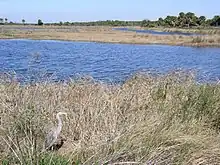
The refuge is inhabited by black bears, bobcats, otters, raccoons, foxes, coyotes, amphibians, alligators, snakes, freshwater and saltwater fish, and many different species of birds, including wading birds, waterfowl, and raptors. During migrations, bird species and their numbers dramatically increase and the refuge is described as a 'gateway site' for the Great Florida Birding Trail.
A boat ramp near the lighthouse offers direct access to the St. Marks River and, subsequently, the Gulf of Mexico. The boat ramp is subject to tidal influence, and low tides may affect launching and retrieving abilities. Kayakers have direct access to the Gulf from the Lighthouse parking lot. There is a biking trail that runs about twenty miles from the south side of Tallahassee all the way down to the nearby town of St. Marks following an old railroad corridor.
The refuge draws a sizable volunteer base that is involved in outreach initiatives, research projects, and public events, including field excursions for kids, festivals, and holidays. The St. Marks Refuge Association's friends group and the photography club provide volunteers for the St. Marks National Wildlife Refuge (St. Marks NWR).
From 2009 until 2016, St. Marks NWR served as the winter home for young endangered whooping cranes. These captive-hatched cranes were taught to follow an ultralight aircraft piloted by costumed Operation Migration pilots on a journey of more than 1,200 miles from central Wisconsin to Florida.[2] The refuge is also a stopping point for the yearly monarch butterfly migration. A festival is hosted annually around the time of the migration each October to educate people on the practice of tagging monarchs as they continue through their migration.
The St. Marks NWR inspired the setting of the author Jeff VanderMeer's Southern Reach Trilogy.[3]
Wilderness
Designated in 1975 by the U.S. Congress as part of the National Wilderness Preservation System, the St. Marks Wilderness makes up 17,350 acres of the refuge. The Florida National Scenic Trail traverses the refuge for 41 miles, including through a portion of the wilderness area.[4]
Access
Public accesses to the refuge are located at:
- Panacea Unit
- Otter Lake, in Panacea
- Bottoms Road, in Panacea
- Skipper Bay Road, south of Medart (may be closed)
- Wakulla Unit
- Purify Bay Road, in Medart
- Shell Point Highway, north of Shell Point
- Wakulla Beach Road, east of Shell Point
- St. Marks Unit
- Lighthouse Road, the main entrance, in Newport
- Mandalay Bay Road, just east of the Aucilla River in Taylor County.
There is no paved public access to the refuge in Jefferson County.
|
References
- ↑ "St. Marks National Wildlife Refuge". FWS.gov. 2023-05-16. Retrieved 2023-06-01.
- ↑ "Whooping Cranes". Friends of St. Marks Wildlife Refuge. Retrieved 2023-06-04.
- ↑ Schardl, Kati. "Exploring 'Area X': Local author has hit with book series based on St. Marks Wildlife Refuge". Tallahassee Democrat. Gannett. Retrieved 9 August 2023.
- ↑ St. Marks Wilderness - Wilderness Connect
External links
![]() This article incorporates public domain material from websites or documents of the United States Fish and Wildlife Service.
This article incorporates public domain material from websites or documents of the United States Fish and Wildlife Service.
